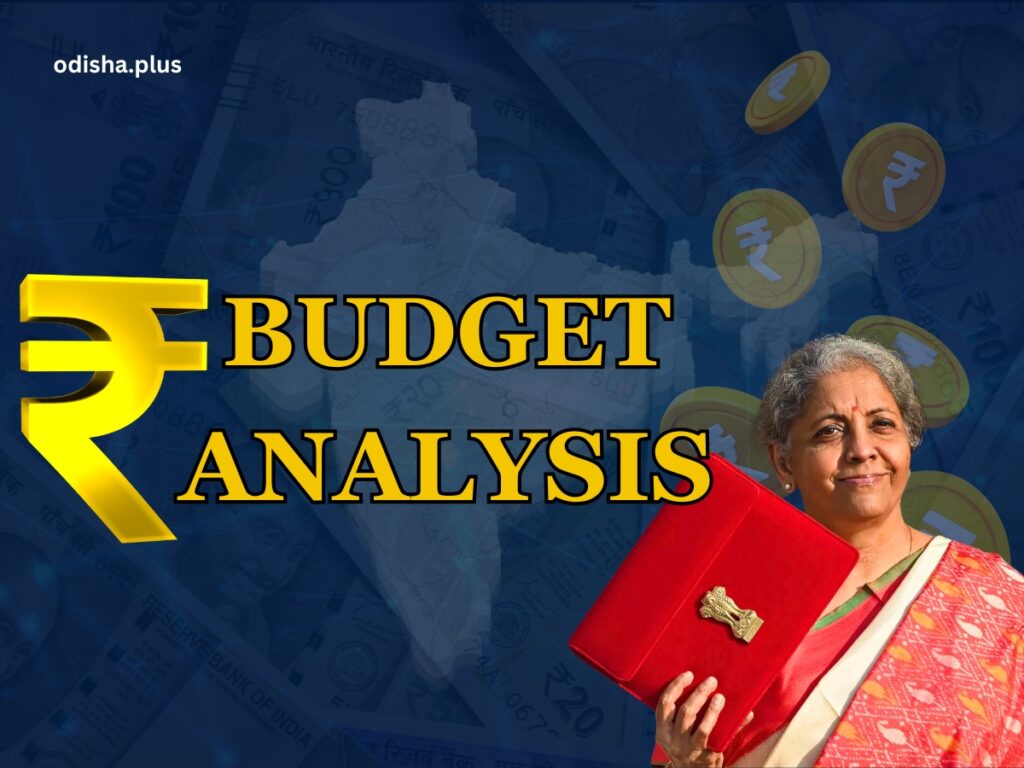Freebies to the poor or mollycoddling of the middle class may bring a political bonanza to Mr Modi, but his rhetoric of Viksit Bharat will not be realized
Prof. Satya Narayan Misra

The finance minister Nirmala Sitharaman has indicated in the budget document that boosting consumption expenditures and bolstering private sector investment with fiscal prudence is her prime focus. She is aware that the Keynesian prescription of the high consumption propensity of the poor and the middle class triggered private sector investment, resuscitating the American economy from the quagmire of depression in the 1930s.
She is also aware that the poor have been targeted enough through a slew of initiatives in the past, like the Pradhan Mantri Garib Kalyan Anna Yojana (PM-GKAY), which gives free food to around 810 million people and costs 2 lakh crores, and the PM-Kisan Samman Nidhi scheme, which benefits nearly 110 million farmers and costs around Rs 1.22 lakh crores. It is now the turn of the middle class to be propitiated.
Delhi Elections
The reduction in the tax rates will benefit nearly 31% of India’s population (400 million) considered middle class by People’s Research on India’s Consumer Economy (PRICE). Pensioners will benefit from the higher relief on interest income of Rs 1 lakh. While the government will forego around 1 lakh crore revenue in the process, there is a sense of deja vu amongst the middle class, rarely noticed earlier. With Delhi assembly elections around the corner, the budget bonanza by Modi to the middle class could not have been better timed!
It was Prof Richard Musgrave, the doyen of fiscal policy, who had underlined three templates; allocation priority, distributive justice, and economic stabilization as the parameters for assessing the quality of a budget. A careful reading of the budget document reveals that the allocation priority that should be given to the social sector, particularly merit goods like quality school education, good health care, and adequate nutrition is missing from the budget.
Social services account for only 5% of the budget (1.98 lakh Crores) While the allocation for education was 81,000 cr in the year 2023-24, the allocation for 2025-26 shows a dip of 20% (61,000cr). Sanitation which is a major concern area finds allocation coming down from 64,000 cr this year to 26,000 cr in the next FY. For a country where 34% of children suffer from Stunting and around 50 % of women suffer from anemia as per the NFHS V Survey, the allocation against the POSHAN 2.0 scheme has increased from 21,200 cr this year to 21,960 cr next FY.
This flies in the face of FM’s speech where she says that ‘the cost norms for the nutritional support of 80 million children, 10 million pregnant and lactating women under the Poshan 2.0 program will be enhanced appropriately. ‘She had similarly promised to upgrade 2 lakh Anganwadi centers out of 13.97 lakh in the budget of 2023-24, a promise still unredeemed. The gap between rhetoric and reality is most glaring in the social sector under the Modi regime, as it was in the Manmohan era.
Distributive Justice
The distributive justice dimension can be better discerned from the trend of revenue collection. There is a clear deceleration in the collection of corporate tax as compared to personal income tax. While in the year 2013-14, the corporate tax collection was 4.28 lakh cr, personal IT collection was 2.46 lakh crores, i.e. a ratio of 64: 36. In 2024-15, the Personal IT collection has increased to 11.99 lakh crores while the corporate tax collection is only 9.8 lakh cr, turning the earlier ratio upside.
This is due to the corporate-friendly tax policy of the government and the slew of hefty tax refunds they have been receiving. While the personal tax collection in 2024-25 has increased by 19%, compared to the previous year, in the case of corporate tax, the increase is only 7%. Distributive justice is heavily skewed against the captive personal IT payers.
Arun Jaitley, in his post-demonetisation speech, brought out how only 1.72 lakh returns were filed by those earning 50 lakhs, and about 148 lakh people had deposited more than 80 lakhs during the demonetization drive. Also, the existing GST regime is highly regressive. To help the poor, GST rates in essential food items, clothing and textiles, health care services and educational services need to be substantially lowered.
On the third parameter of economic stabilization, Nirmala has certainly stuck to her mandate to abide by the Fiscal Responsibility and Budget Management(FRBM) target of reducing the fiscal deficit to 3.0%. From 5.6% in 2023-24, she has brought it down to 4.8% in 2024-25, with a target to achieve 4.4% by next FY. With 0.4% reduction every FY, she should reach the target of 3.0% by 2028-29. The total Central Government Debt/GDP is also likely to come down from 57.1% to 56.1%. However, the total tax collection/GDP ratio is quite low, around 12% as compared to 20% in China, 25% in the USA, and 34% in OECD countries.
As against the other parameter of economic stability, i.e. the level of unemployment, the record of the Modi government is not edifying. The Production Linked Incentive (PLI) scheme launched in 2020, which focuses on specific sectors like automobiles, electronics, and pharmaceuticals has shown some promising results, with over 6.78 lakh jobs created.
ELI Scheme
Mobile phones where exports have been doubled seem to be dogged by the perception that the value addition is less than subsidy given and reduction in tariff on components as per a study by Raghuram Rajan. The Employment-Linked Incentives (ELI) scheme launched last year has not taken off. Neither has the promised upgrade of 1000 ITI started. This is a serious setback to the upgradation of the skilling of workers, which so critical to the improvement in workers’ compensation package.
The Centre for Monitoring Indian Economy (an independent entity that serves as an economic think-tank) CMIE’s last report puts the unemployment % at 7.8%. The India Employment Report (2024) brings out how casual workers who constitute 25%of the workforce get a monthly wage of about 4,712 rupees and those in the self-employed category (42%) earn around 6,843 rupees per month. It is generally believed that around 50% of our working population earn below 15,000 per month.
Sadly, the budget does not come out with a realistic road map to resolve these humongous problems of unemployment, poor pay packages, and under-skilling. The promise of Viksit Bharat is predicated on a growth rate of 8% and investment of 35%. At the present growth rate of around 6% and investment of 31%, the laudable objective of a developed India is not realizable.
In the Harrod Domar Model, it was brought up how growth is dependent on investment and factor productivity. India’s incremental Capital output ratio is presently 4.8 which needs to be brought down to 4.4, for India to inch towards a growth rate of 8%.
This will require a change in allocation priority towards human capability development, greater investment in education, and a big push to skilling to complement the handsome allocation the government has made in economic infrastructure.
Freebies to the poor or mollycoddling of the middle class may bring a political bonanza to Mr Modi, but his rhetoric of Viksit Bharat will not be realized.
(The author is a Professor Emeritus, KIIT University, Bhubaneswar. Views expressed are personal.)
#UnionBudget2025 #Budget2025 #NirmalaSitharaman #IncomeTaxReform #MiddleClassRelief #ViksitBharat #EconomicGrowth #BudgetHighlights #IndianEconomy #FinanceMinister #BudgetSession2025



























